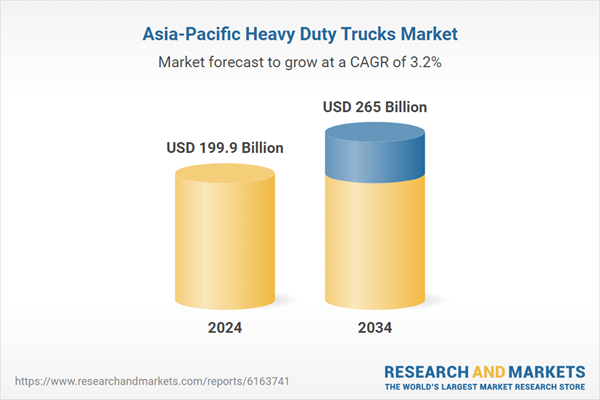The logistics, mining, and construction sectors are driving demand for payload-optimized and fleet-customized heavy-duty trucks (HDTs), as companies aim to maximize operational returns through vehicle configuration tailored to their specific use cases. In logistics, fleet operators seek trucks with enhanced fuel efficiency, GPS-enabled route optimization, and telematics systems to reduce delivery times and minimize operating costs. For mining operations, the emphasis is on high-torque, rugged HDTs built to handle extreme payloads, uneven terrain, and harsh environmental conditions, with reinforced suspension and advanced braking systems. In the construction segment, demand is growing for multi-axle configurations and dump-body variants designed to move materials efficiently within confined job sites.
The Class-8 trucks segment held 73% share in 2024 and is projected to grow at 3% CAGR through 2034. These vehicles, typically over 33,000 lbs (15,000 kg) in gross vehicle weight, are favored for their durability, payload capacity, and high engine performance, especially in logistics, infrastructure, and mining sectors. Their consistent demand makes them a staple in fleet expansion across the region.
The diesel-powered trucks segment held a 67% share and is projected to grow at a CAGR of 3% during 2025-2034. Despite sustainability goals, diesel remains the preferred choice across Asia-Pacific due to established fueling infrastructure, cost-efficiency, and compatibility with long-distance, heavy-load operations. Countries such as India, China, and Australia continue to depend heavily on diesel for commercial vehicle fleets due to payload needs and after-sales service reliability.
China Asia-Pacific Heavy Duty Trucks Market held 45% share and generated USD 90.3 billion in 2024, reaffirming its position as the regional leader. Its dominance stems from a robust manufacturing ecosystem, steady domestic demand, and large-scale adoption of electric and alternative-fuel heavy-duty trucks. China's rapid urbanization and ongoing infrastructure projects, coupled with export-driven initiatives like Belt & Road and RCEP trade frameworks, contribute to its market leadership and vehicle electrification momentum.
Key players shaping the Asia-Pacific Heavy Duty Trucks Market include Volvo, SINOTRUCK, Tata Motors, Daimler Trucks, Dongfeng Motor, Ashok Leyland, and Isuzu Motors. To reinforce their market presence, leading companies in the Asia-Pacific heavy-duty trucks industry are focusing on next-gen vehicle development, expanding electric and hybrid truck portfolios, and aligning with stringent emissions standards. They are investing in digital transformation through telematics and smart fleet integration, while forming regional alliances to scale production and distribution. Several manufacturers are leveraging localized manufacturing to lower operational costs and address country-specific logistics needs. Product customization, after-sales service enhancement, and technology collaborations with software firms are also key to staying competitive in this evolving market.
This product will be delivered within 2-4 business days.
Table of Contents
Companies Mentioned
The companies profiled in this Asia-Pacific Heavy Duty Trucks market report include:- Ashok Leyland
- BYD Auto
- Daimler Trucks
- Dongfeng
- Foton Motor
- Freightliner
- Hino Motors
- Isuzu Motors
- JAC Motors
- Kenworth
- MAN
- Navistar
- PACCAR
- Peterbilt
- SCANIA
- Shaanxi Automobile
- SINOTRUK
- Tata Motors
- TRATON GROUP
- Volvo
Table Information
| Report Attribute | Details |
|---|---|
| No. of Pages | 135 |
| Published | July 2025 |
| Forecast Period | 2024 - 2034 |
| Estimated Market Value ( USD | $ 199.9 Billion |
| Forecasted Market Value ( USD | $ 265 Billion |
| Compound Annual Growth Rate | 3.2% |
| Regions Covered | Asia Pacific |
| No. of Companies Mentioned | 21 |









